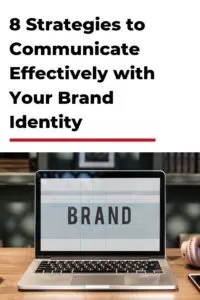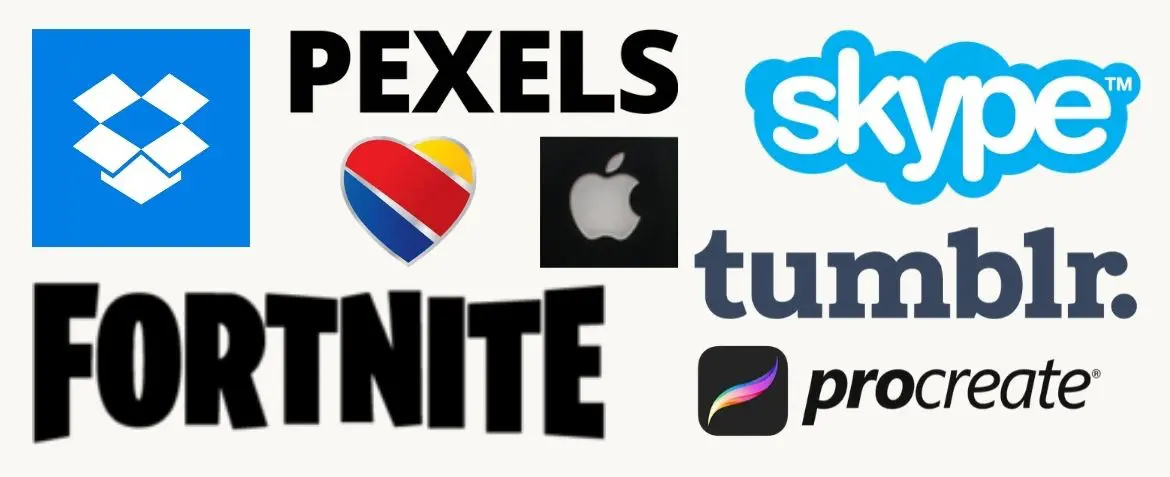 For every company, there comes a point where they have to consider their brand. Some companies start with this before they begin, and some companies do it after they have started to grow. Branding is an effective way to help people understand who your company is.
For every company, there comes a point where they have to consider their brand. Some companies start with this before they begin, and some companies do it after they have started to grow. Branding is an effective way to help people understand who your company is.
Choosing the right branding elements can help you to build a solid representation of what you have to offer. This can increase credibility, recognition, and interest for your company. The elements that you choose are what will come together to create your brand identity.
A brand identity is a combination of design choices that work to represent your company. These choices must be in line and will work together to create an image of your company. You can expect the choices that you make here to tell your audience what you are about.
You can use brand identity to stand out, to blend in, or to balance both. At the end of the day, your brand identity is what people will recognize you for. This can determine if they go with your products or if you are going to be a good fit for them. A well-designed brand identity can take your business to the next level if you use it to communicate effectively.
 Pick The Right Company Name
Pick The Right Company Name
Though you might already have a company name in place, this is a crucial part of brand identity. A good company name can tell a lot about a business. It can determine if people remember you. It can determine the inferred value that people see in your company. You might even find that it is a reason people choose to work with you or choose not to. Your company name is the headline of your brand identity, so it needs to be a perfect match.
Certain naming conventions are more powerful than others. If you use an overly basic name, you run the risk of people easily forgetting what your company is called. If you use an overly complicated name, people will almost definitely forget what it is called and struggle to say it.
Some names are overly generic and can naturally diminish the value of your brand. However, this can be used as an actual technique in the event that you want people to think your brand is cheap. For companies looking to sell cheaper versions of popular products, this can actually be beneficial.
Your name should be chosen with purpose. This means that it needs to be unique to your company and your overall goal. A popular approach is to use a last name, product name, or something specific to your industry. Names can be stark, interesting, or even just catch. It is entirely up to you. Just be aware that what you name your company will naturally communicate what your business is about.
Focus On Your Industry
When creating your brand identity, you will want to consider your industry. If you are entering a specific market, you want to do your part to fit in. This is important because it will make it easier for people to affiliate you with your line of business.
In most cases, industries have different elements that are specific to each one. As you begin designing, you should take the time to consider the identities of other companies in the industry. Once you start looking for them, you will be surprised to see how many consistencies there are.
If you take the time to consider professional industries like Finance, you’ll notice that there has actually been a shift. This is an important lesson because it shows that brands have to adapt to match their industry. If major companies are doing it, then it is probably a good idea for you to do the same.
Originally Finance branding was focused on sharp edges and clear design to focus on the professional factor. Now, many popular companies are rebranding to look more friendly. This is a direct response to customer requests and the negative reputation this industry sometimes gets.
For a company planning to enter an industry, you should always be aware of what your industry looks like. Failing to do this can result in choosing a brand identity that is confusing. While there is some power in standing out, direct contradictions matter.
If your company is making holistic dog treats, you will want a gentler identity than a tech company. Choosing industry appropriate identity factors can help people accept that you belong in that industry, which is great for smaller businesses.
Choose The Right Tone
When you design a brand identity, tone is a crucial element. This will govern so much about your other branding decisions, but people tend to overlook it. It is an unspoken factor that lies beneath all of your choices. Identifying your tone will ultimately guide how you interact with your audience.
More importantly, it impacts how you will design your brand. Your tone might be professional, playful, sincere, or family-focused. Find that underlying idea that you want to convey and choose appropriately.
An important element to communicating with your tone is color choices. Colors drive so much of branding, and yet people still think that it just matters if they look nice. While it is absolutely true that you want your colors to look nice, you want them to say something. This might mean choosing colors that are specific to your industry or choosing colors to convey another message.
The colors that you choose can tell an audience a lot about who your company is. Bold colors neon green or bright red might work if you are aiming to show your audience that your energy drink is extreme. Soft colors like pastel blue or orange might be good to show an audience that their elderly loved ones will be safe with you. As people, we tend to affiliate colors with certain emotions. Consider this when you are making tone appropriate content.
Tone is also impacted by your written content, the way your website is designed, and more. Knowing how you want to come off to your audience will help you to make more educated decisions. You will notice that when a branding element doesn’t feel right, tone is generally what is off about it. Making sure that everything falls in line with your tone is necessary for consistency.
Find The Right Voice
A major component of your brand identity is your brand voice. This is another element that is largely driven by tone. Since you use it to communicate directly to customers, it is incredibly important to get it right. The best place to start is to think about how you want to come off to your customers. Knowing this will help you to choose the right communication methods for your writing.
Depending on the nature of your business, you will want to choose a voice that resonates with your audience. If you run a law firm that is built upon proving to your audience that you are capable, you want to use professional language.
Professional language should always be clear, concise, and consistent. Keeping these factors in mind will help you to demonstrate confidence and knowledgeability.
This kind of consideration can be adapted based on the industry. If you’re working in wellness, you might want to come off more human and relatable. This can be carried out by using simplified language that is comfortable to read. People will naturally find this to be disarming, and that can increase your credibility in your service.
Finding the right voice is the difference between “to whom it may concern” and “hello there!” from a linguistic approach. It is the manner of how you address your clients and how you want them to see you. Choosing a consistent voice that matches can give your business something to be known for. It is also an excellent way to stand out.
Keep Your Branding Consistent
Consistency is a crucial part of your brand identity. If you want to make sure that you are communicating effectively, then you must be consistent. Any lack of consistency in your brand will confuse your audience and can skew your message. Making sure that you use consistent colors, language, and design elements will make your brand identity more concrete.
When you are designing your brand identity, make sure that it looks the same across the board. This means if your web language is friendly, your newsletter should also be friendly. If you’re using a specific color scheme on your landing page, carry it throughout the website. A consistent brand is recognizable and communicates a specific message. Choose accordingly.
Choose The Right Kind of Logo
As far as brand identity elements go, your logo is a crucial point of initial contact. People will automatically infer certain things about your company based on your logo. Your decision here can impact how people view you and what they think about your company. Choose a logo that is clear, concise, and matches the tone of your brand. You might want to include corporate colors or choose a font that demonstrates your core tone.
Use Images That Match Your Intentions
Plenty of companies get into trouble when it comes to using the correct images. If an image is worth a thousand words, a business image is worth triple that. Images communicate messages more distinctly than words tend to in this day and age.
This means that picking the right images to communicate with your audience is a crucial process. You’ll need to ensure that you pick images that are tone appropriate and match what you are saying. This means not pairing an image of a happy person with a difficult topic. It means not posting a picture of a sad pet if you’re selling dog treats.
Carry This Identity Into Everything You Do
Your brand identity might be technically composed of design elements, but it goes beyond that. Particularly when it comes to products or brick and mortar stores, you have to carry it further. The message that your brand identity shares with your audience should be shown in your business. This means that your product should match your identity and so should your employees. Carrying this message in every aspect of your business will help you to communicate effectively.
An excellent example of brand identity that stretches into business practices is Chick-Fil-A. Their employees are trained to say “my pleasure” in response to helping a customer. This simple consistency is something that their restaurants are known for, and further demonstrates their identity.
For a company rebranding to focus on valuing their customers, this simple statement acts as a valuable tool. You can do this with uniforms, sentiments, and business practices as well to carry your identity further. Bringing it into everything that you do will communicate to your audience who you are.
Conclusion
Your brand identity is easily the best communication tool that you have. You can leverage these elements to show people who your company is before they even work with you. Getting ahead of their opinions is an excellent way to make sure that you are being viewed in the correct light.
As you make your decisions, always ask yourself what you are trying to say. The things that you want your business to be known for will help guide you as you plan out your identity. After you have settled on an identity, it is just a matter of making design choices that accommodate it.
Which strategy are you using for your brand?






